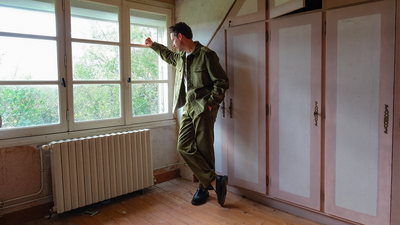For several years, De Bonne Facture has been honouring European linen and participating in the development of this local culture, known for producing quality linen fibres. Most of the linen used in our editions is certified by the Masters of linen® label, which guarantees 100% European linen fibre, from the cultivation to the transformation of the material and the making of the piece. To date in Europe, only six weavers can claim the title "Belgian Linen™". This label guarantees the use of at least 85% of fibres of European origin. These companies, with whom we work in partnership with the European Confederation of Linen and Hemp, have been producing high quality fabrics for our pieces for several editions.
Linen was born in ancient Egypt, and is the oldest textile source in the world. It was brought to Europe by the Phoenicians around 1700 B.C. and is now mainly cultivated in Europe's vast coastal area. This extends from the Caen (North of France) plain to Amsterdam, passing through Flanders. The naturally humid and temperate oceanic climate gives the soil ideal properties for growing this plant fibre.
Linen is sown between March and April. From then on, the plant takes 100 days to flower. Its early morning flowering, which lasts only one day, makes it a very special plant. The flax fields are then covered in a celestial blue hue. It is an ephemeral and magical moment. When the flax is ripe, the farmers pull it out to keep all the fibres from the head to the foot of the plant and lay it down in strips on the ground. This is when the first natural phase of transformation takes place from July to September. The alternation of rain and sun allows the linen, laid out on the ground in swaths, to turn into a fibre plant. This stage allows the elimination of the pectose, the natural cement that binds the textile fibres located on the woody part of the plant. Once this stage is completed, the swaths are rolled into bales. These bales are then stored until the scutching process, which is the most important step in mechanically extracting the fibres.
Our entire linen wardrobe is woven by a family business specialising in the cultivation and traditional production of linen since 1858.
"The best linen in the world grows in an area between the Caen plain in France and Amsterdam in the Netherlands" Raymond Libeert.
Indeed, the majority of the world's production takes place in this region of Europe, as this plant requires a humid, oceanic climate, rich soil, with a regular alternation between rain and sun.
This raw material is produced and processed locally, which means a low carbon footprint and full traceability at every stage. Our weaver is certified carbon neutral since 2014.
Source: CELC





